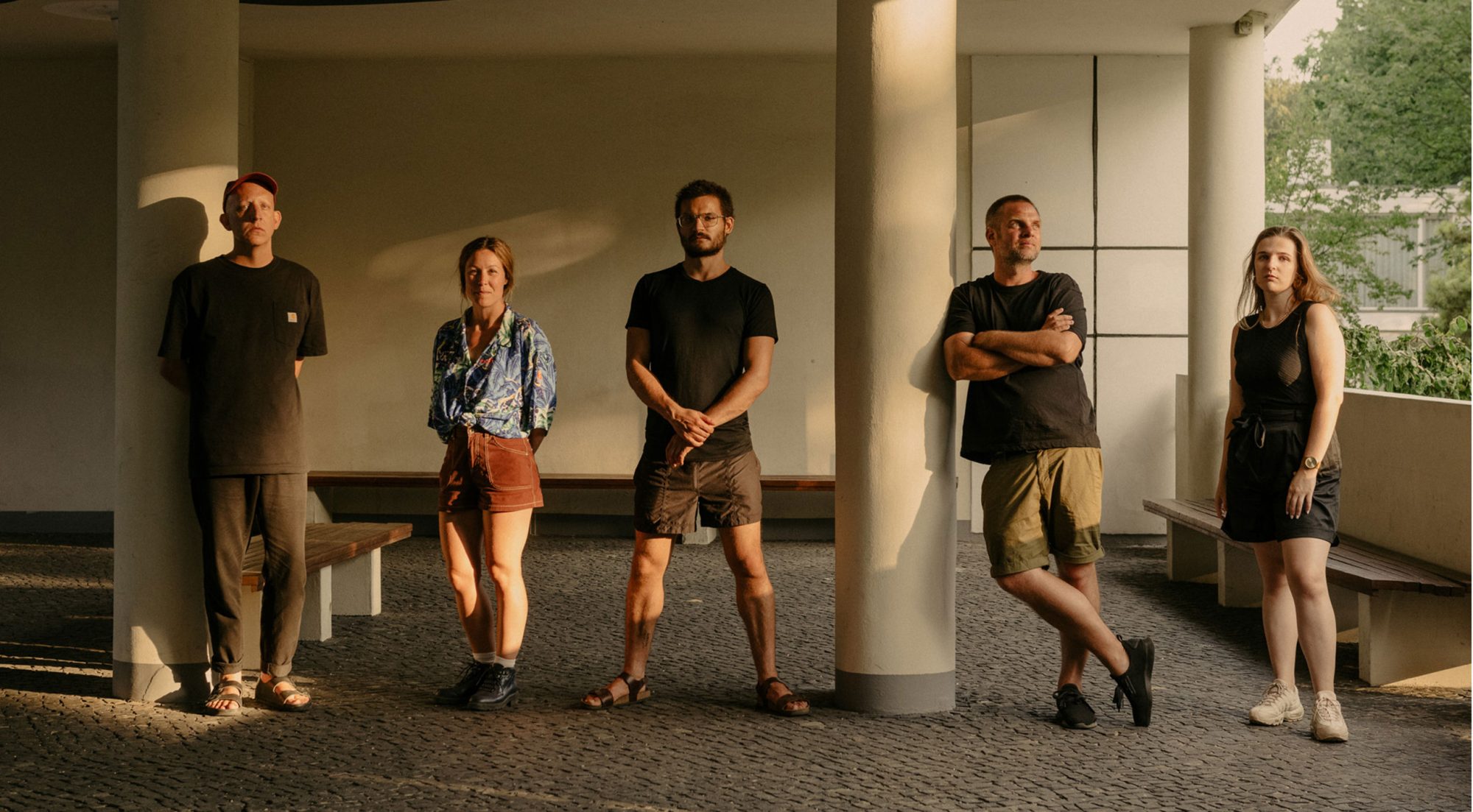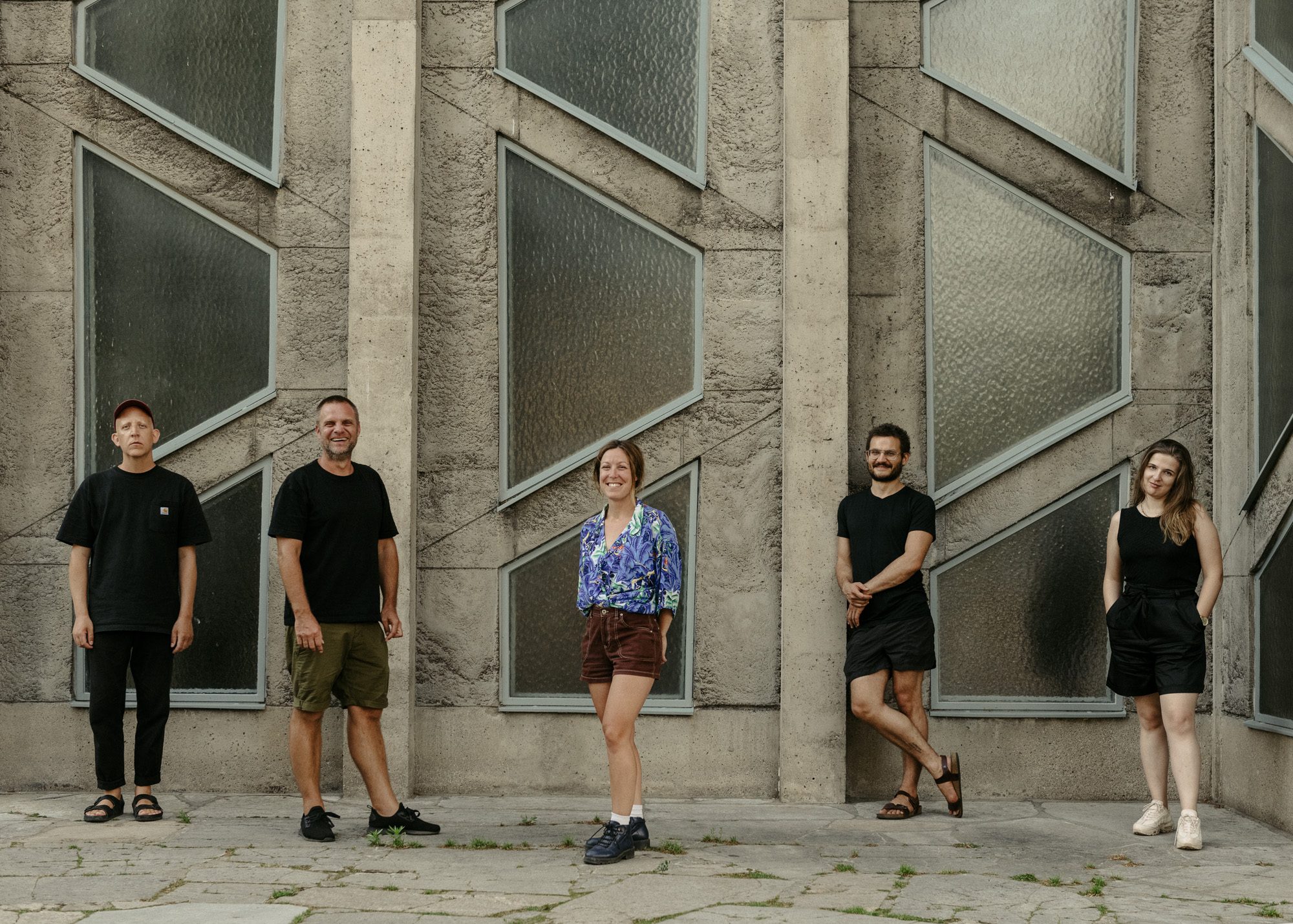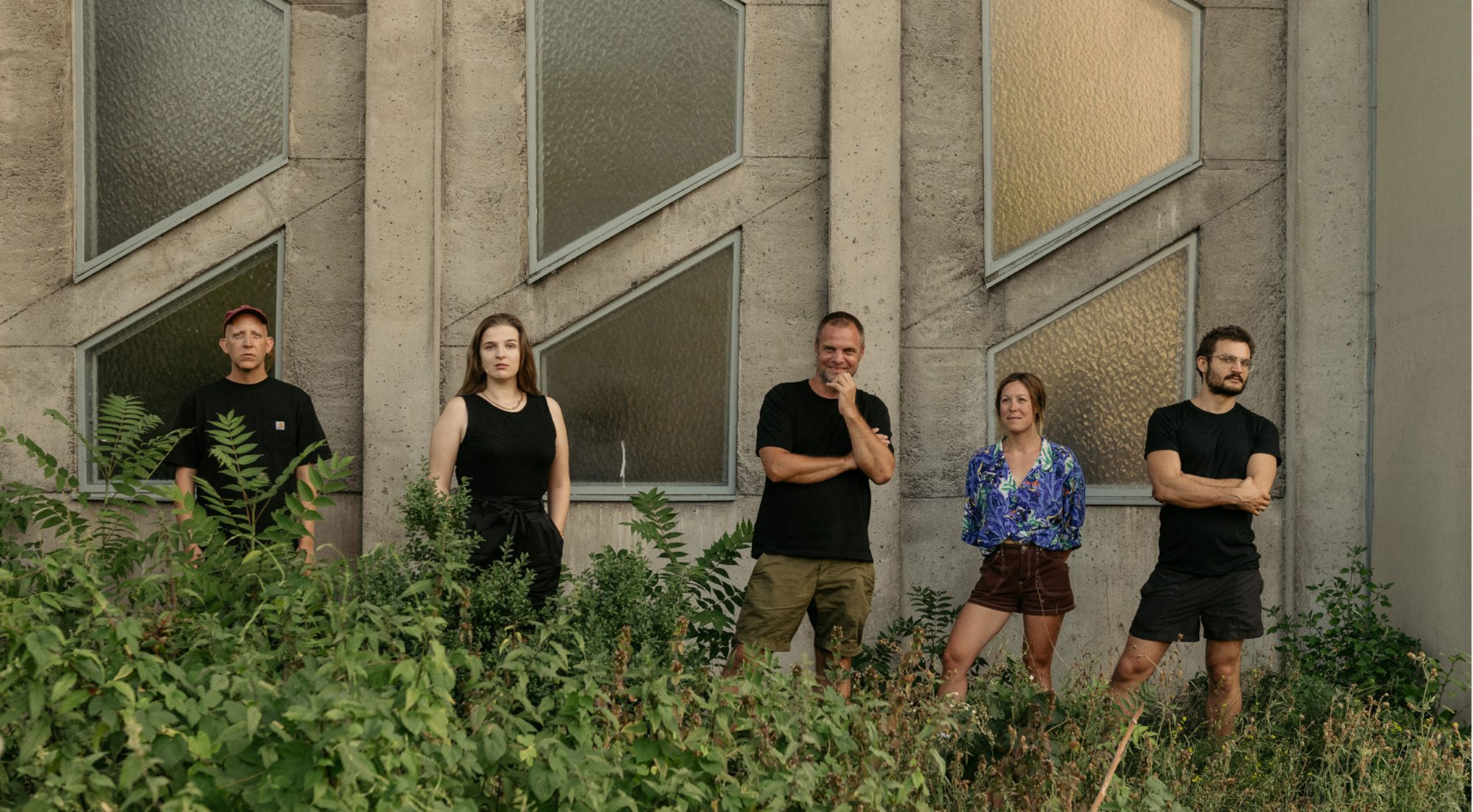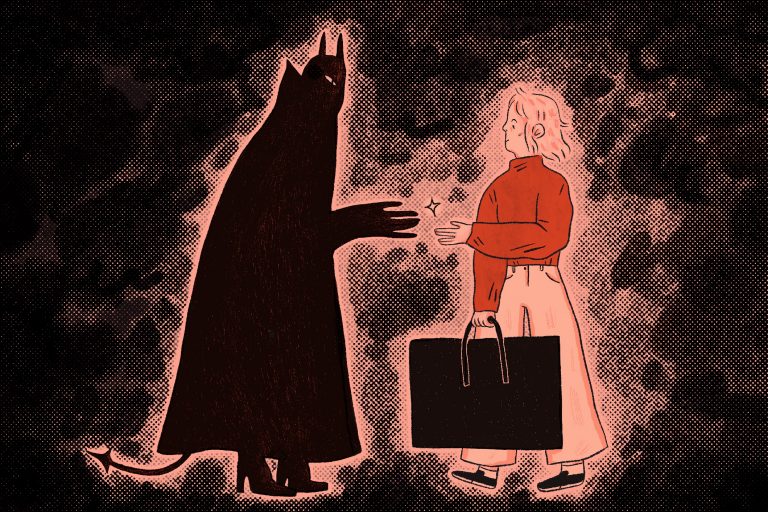
All for One and One for All
Scattered across seven countries and six timezones, how have New Studio mastered the art of remote working?
Words by Alec Dudson
Photography by Robert Rieger
As we’ve already discovered, creating and maintaining a progressive and productive workplace culture is a fine balancing act. But how do you do approach the challenge if your team is scattered around the world, working out of their own spaces? It’s a question that needs asking if we’re to effectively understand the secret sauce of studio culture and one that we hope to answer by revealing the machinations of New Studio. The collective describe themselves as ‘a group of designers who collectively push boundaries’. What’s fascinating about their set-up though is the manner in which their individual and collective goals are prioritised and balanced.
There’s a great mix of practitioners here, each boasting different strengths, interests, specialisms, networks and needs. Usually split across seven countries and six time zones, Axel Peemöller, Rita Matos, Tim Rehm, Audrey Belaud and Marius Jopen came together earlier this year for their first face-to-face meeting. It’s not the first time that various combinations of New Studio have physically worked together, but their first annual get-together where the aim is to reflect and build on this pliable, evolving model of collaboration that they’re using to boost one another’s capabilities.



Axel Peemöller (top) and Rita Matos photographed by Robert Rieger
Although absent on this occasion, they’re joined in the collective by Jon Gray, Tim Sürken and Dimitris Papazoglou. Practically, of course, it’s challenging to all get together at the same time online, let alone in the same place. While some might see this as a limitation or an obstacle for working together, New Studio seems to embrace the sporadic nature of this connection, placing great stock in their independence as well as their camaraderie.
“The key point about New Studio at the beginning, and still, is to keep that individualism and individual freedom so people aren’t bound to this nine-to-five and aren’t losing their own identity,” explains Axel. Indeed it’s with Axel that this story begins. A big believer in the power of collaborations throughout his 25-year career, having worked on various projects with good friend Dimitris for a decade, he started to play with ideas for a structure that could solidify and expand on those alliances. Being based in New York, while Dimitris was in Thessaloniki provided access to clients in two different markets and having supported one-another effectively, the pair had been able to establish great client bases and stellar portfolios, in part as they were able to rely on one another as creative back-up where necessary.



Tim Rehm (top) and Audrey Belaud photographed by Robert Rieger
New Studio began last year as a “conceptual group, working together as one” and formalised a number of the collaborations that Axel had been part of already, while also actively expanding by bringing members on board with a broad range of skills, expertise and perspectives. Rita Matos, stationed in Lisbon, Portugal is one such addition.
Having worked in a more traditional studio set-up for four years, Rita began to pick up some freelance projects on the side in her final year. Within those 12 months, her client base, largely in the underground music scene had grown to the point where she decided to go freelance full-time. “I had a plan to keep my local clients, but also to try and expand a little bit on the international side” she discloses, “so I did a solo exhibition here, got published online and I think that’s how New Studio found me”. After meeting up in New York, Rita instantly connected with the New Studio team, its way of work and ethos. Shortly after, she became part of the group that launched the project publically. Her plan to build her international profile couldn’t have gone much better.


Marius Jopen photographed by Robert Rieger
With eight members currently, the recruitment process has already evolved into something more “organic” according to Axel. Now that people from outside of the members’ networks are discovering New Studio, there are discussions within the group on how they should manage the size and makeup of the group. Currently, they’re keen to see what a new member can bring to the table, whether that’s clients, interesting projects or a skillset that can boost their collective power. One of the huge benefits of their approach is that it allows each member to deliver projects that are more expansive than they would be able to manage alone, but with extra bodies, inevitably come decisions about who joins and who doesn’t. It’s not an issue that seems overly problematic to the team though, “we’ll probably always evolve in this way that sees people join and people leave” Axel pragmatically and calmly concedes. “Some people will have a more prominent role at times and at other times will be totally occupied with a project of their own” he muses, “there might be certain core members but I think that it needs to allow that space for people to come and go”.
While Axel never wanted to start a studio under his own name or be the boss, it seems that his flexible and composed character is at the heart of making what could be a complex system, feel natural and empowering. I’m curious to see what tools or structures are in place to maintain smooth and effective communication across the various nodes of the operation, surely it gets tough at times? “We thought about having scheduled meetings recently, as well as having some more in-person meetings, but we’re still a small team in a way, so it allows for us to be in pretty constant communication, without all checking up on each other every day” assures Rita. It seems like regular, indirect communication works well for New Studio. “Even if I’m not talking with Dimitris” Rita expands, “I’m talking with Axel, who is talking with Dimitris, so we all know what we’re doing and where we stand”. It’s an attitude that fits with the independent spirit that each member of the studio retains and perhaps goes some way to explaining why this collaborative experiment is working so well. The independence, resilience and decision-making skills that make an effective freelance mindset would also suit this structure of horizontal collectivism.

“We described it as a community garden” muses Axel, “It’s like one person plants the tomatoes, the other fixes the fence, someone takes the weeds out and someone else puts a little bit of water on everything. Then all together we make a salad out of the veggies that everyone has contributed to”. There’s no obligation Axel is keen to stress, but each member’s contribution is a means of building their individual studio, so the opportunity to benefit individually and collectively serves as motivation to contribute effectively.
Of course, the flat hierarchy of New Studio is also an essential element in its ongoing harmony. Axel may be the instigator, but he doesn’t seek to impose any sort of seniority within the team, a position underlined by the way in which work and pay is distributed amongst the group. Whoever brings a project to the group not only manages it but retains 10% of the fee. The remaining 90% is then distributed based on the degree of contribution from any studio members involved. All of this is discussed collectively and transparently. If things shift, then the fees can and are reassessed. It effectively means that there’s a team available to pick from for each member when they’re sizing up a new project. Once they’ve told the team what they need and know who is available, they can go back to the client with a clear plan. With transparency and flexibility come some fantastic benefits. If someone has a project to complete but is sick, they can hand the project over to someone else for a period of time and not lose any momentum. Protection and insurance isn’t something that freelancers are afforded, but in this case, that back-up can be called on in all manner of scenarios. In return, what is demanded of studio members “it takes a lot of responsibility” Rita assures, “I think that’s the main thing”.




Taking that responsibility seriously when stepping on to a project seems a more than reasonable price to pay for the tangible benefits that are on offer in return. “I don’t think I would have progressed so fast,” remarks Rita. “Being able to work in this way with people who are a lot more experienced than me, has been a huge, huge, huge advantage of it. I’m learning a lot and I’m taking notes all the time”. Working as peers rather than employees and employers certainly has helped to ensure that the value exchange flows in both directions. For those who have been in the game longer, the new perspectives, skills and approaches that are brought to the table allow almost instant access to flexibility, perspective and reach that would otherwise be difficult to conjure.
Within New Studio it’s accepted at face value that “everyone has different goals and ambitions” Axel reasons. It strikes me that in building a system where the individual gains are at the very least on par with the collective goals, New Studio has tapped into a way of working truly flexibly in a digital space, that is all too often counter-intuitively reduced to inflexible, binary terms. Our personal brands are a constant site for development and curation in this creative economy and this collective has found a means of supercharging theirs in a way that isn’t all-consuming or isolating. I can hear the sound of hundreds of new “community gardens” springing to life already.

‘Winning together and losing together’ is the second story in our new series Studio Culture. We hope that it serves as a reference point for employers and employees alike. Throughout the series, we aim to take you into some of the most progressive creative workplaces in the world offline and online, to share some best practice and inspire you on your journey, whatever stage you’re at. This piece was written by Alec Dudson, who you can follow on Twitter here. It was photographed by the masterful Robert Rieger. Having been blown away by his work, you can follow him Instagram here ahead of lining him up for your next big commission. New Studio share some of their latest work on Insta too, so follow them here. We’re off to get behind the scenes with another cutting-edge studio, the report will be on your desk soon.









